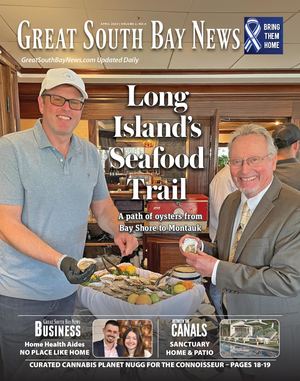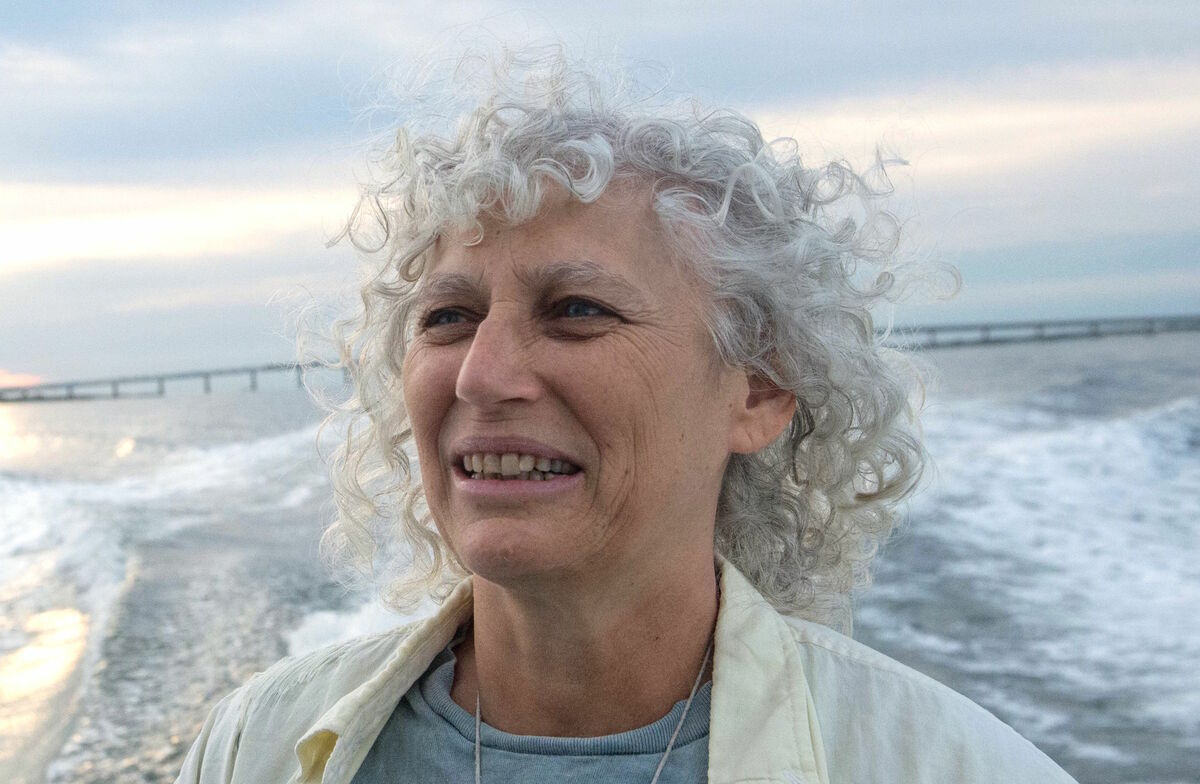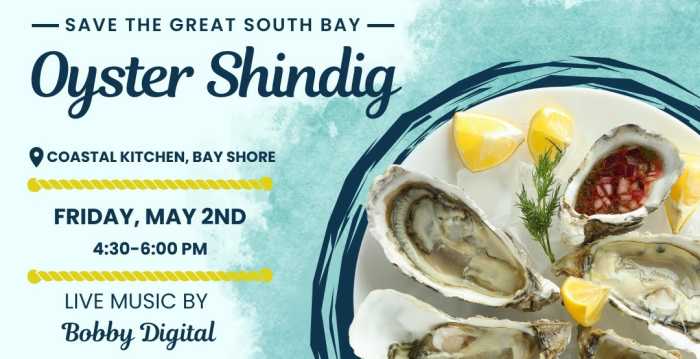Dr. Merry Camhi, Director of the New York Seascape Program, has devoted her life to protecting marine wildlife in the New York Bight. The esteemed marine biologist’s passion for environmental conservation has taken her across the globe, conducting research and advocating for the creatures that call the ocean their home. In her role at the World Conservation Society (WCS), she has worked on satellite tagging sharks, studying their movements and habitat needs in the Mid-Atlantic region. She is also a member of the International Union for Conservation of Nature (IUCN) Shark Specialist Group.
GSBN: As a woman in marine science, have you faced any obstacles, and how did you overcome them?
Dr. Merry Camhi: It’s interesting because this is a huge issue. Women are much more limited in terms of their opportunities. There is still a fair amount of sexism, even within universities. I had mentors who supported me, so I faced fewer obstacles, but I wasn’t working in an intensive biochemistry lab. There are more women in conservation than in other STEM academic fields. That said, it’s still harder for women to move up in the ranks within conservation. Part of it is the same old constraints, whether it’s old perceptions about women being home and taking care of kids or having to raise a family. But I’ve had children and didn’t let that get in the way.
GSBN: What sparked your inspiration for shark conservation?
Dr. Merry Camhi: I was born in the city, grew up in suburbia, and was introduced to nature and wildlife in high school through an English teacher. So, I went to college thinking I wanted to study biology; I studied biology at Rutgers University, then went on to grad school for ecology and decided to do conservation work. Initially, I thought I was more aligned with terrestrial studies, like birds and mammals. But in grad school, I was allowed to research sea turtles, and I jumped on it. I ended up going to Costa Rica to do some research on green sea turtles and olive ridges, both of which are seen here in New York as well. When I finished grad school, I had an opportunity to work with a colleague I’d met who was setting up a marine fish program for National Audubon right here in Islip. At the time, everybody thought of fish only as seafood; it was only what was on your dinner plate, but nobody perceived fish as wildlife. The idea was to expand our thinking about wildlife and conservation, habitat protection, and management to a whole ocean. That’s how I got involved with shark work. I wasn’t this crazed kid loving sharks or dinosaurs; I expanded into it.
GSBN: Why is shark conservation critical to maintaining healthy ocean ecosystems?
Dr. Merry Camhi: Sharks have been plying our oceans for hundreds of millions of years; they’ve always been here and in our waters. Not all of them are predators. Some feed on plankton only; most sharks are either in the middle or at the top of the food chain. As a result, they can help structure the health and functioning of marine ecosystems. Every species plays a role, but sharks can sometimes play a disproportionate role as they are generally viewed as top predators. They’re part of the nature legacy we have been lucky enough to be endowed with here, and we have a responsibility to help keep our oceans healthy and keep the biodiversity at our doorstep intact. It’s their natural habitat. Respect them. I also urge people to consider the language used when speaking about them. We must learn how to share our waters with sharks and all the other wildlife here.
Our job as a conservation organization in New York is to ensure a safe place for wildlife in the increasingly busy waters of the New York Bight, and that’s a challenge. We have a lot of fishing, sand extraction, energy development, and wind, and ships come in and out, bringing all kinds of goods to our ports. It’s busy here, but wildlife needs a safe place as well.
GSBN: What are some misconceptions the public might have regarding sharks?
Dr. Merry Camhi: If you’ve been swimming in waters here, in New York, at any stage in your life, you’re always swimming with sharks. They’ve always been here. We have about two dozen species of sharks that are regularly in our waters, mostly here in the summertime and late spring, but they’ve always been here, so you’re swimming with them. Some people have an overblown fear of the risks of swimming with sharks, but in reality, it’s more likely to have a vending machine fall over on you than experience an encounter with a shark. Globally, less than 10 people are killed by sharks each year, so the risks are very low. There are more than 1200 species of sharks and rays, and only a handful have regularly had negative interactions with humans. Most species have no interest and very few interactions with humans. Oftentimes, if there is an interaction, it’s like we’re in their kitchen when they’re eating dinner, and their teeth are like knives, and sometimes you get cut. Most of the time, the interactions are just a matter of a grazing or an accidental interaction. It’s rare that there’s anything more serious anywhere in the world, especially here in New York. Sharks have more to fear from humans than we do from them. We estimate that approximately 100 million sharks are killed each year from the meat and fin trade by humans, and there are very few mortalities of humans due to sharks.
GSBN: Do you think women bring unique strengths to leadership roles in marine conservation?
Dr. Merry Camhi: I don’t necessarily like to make broad-stroke assumptions because every individual brings their own strengths to the table. Whether in nature or human endeavors, diversity brings strength, new perceptions, new knowledge, and new compassion. I think women are knowledgeable and capable and can bring everything and anything. More representation of women across the board in every career is important. I do think that more women in leadership roles provide role models for younger students of all genders. I think it’s important to see women in these leadership positions so a child can say, ‘Oh, I can see myself doing this.’
GSBN: What legacy do you hope to leave for future generations of scientists and marine conservationists?
Dr. Merry Camhi: The message I’d like to leave is, ‘Save Something.’ I want people to value nature and center it more in their lives. We need more people to respect it and help to protect it. We think about nature as something that’s there just for our use. We protect forests for hiking. We need to value wildlife and habitat in a very different way. Nature has a right to exist. Understanding nature’s rights, elevating nature’s rights, and the importance that nature plays in our lives is critical.



























